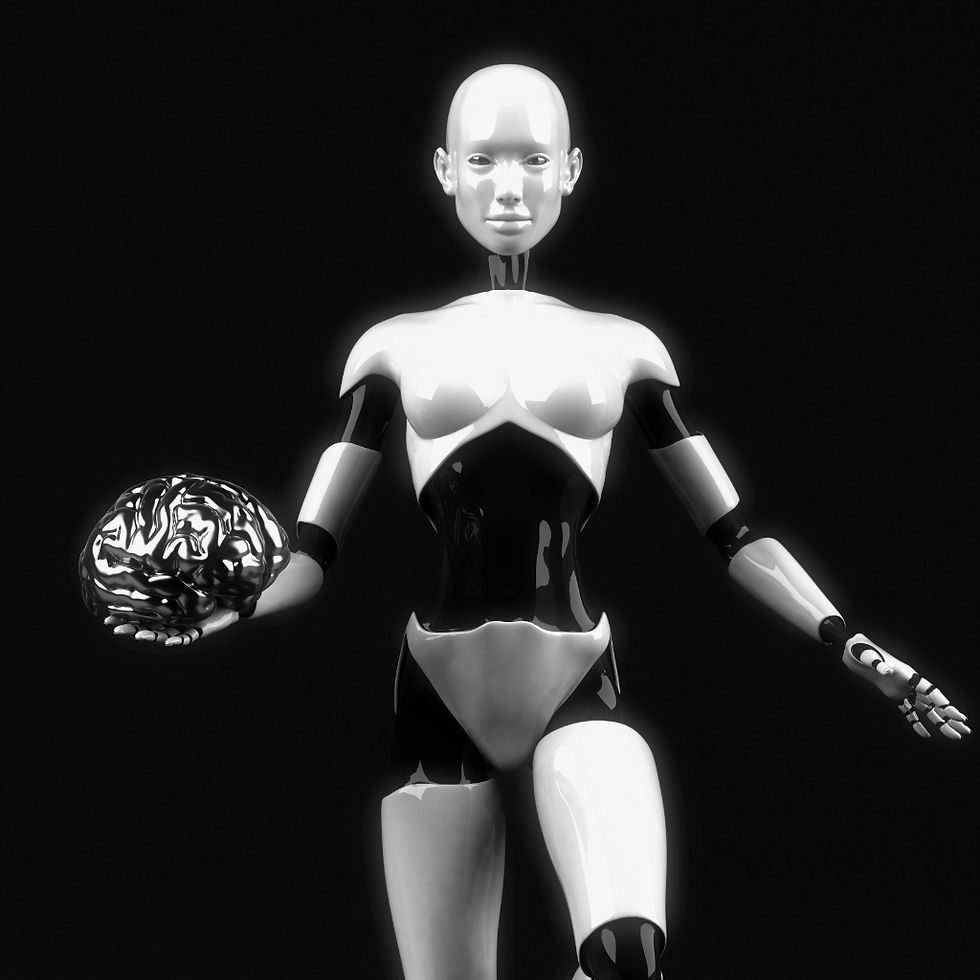Digital transformation strategy: how AI is removing companies from the market
- Manelik Sfez

- Aug 18
- 5 min read
Updated: Aug 28
Every day, companies disappear from the conversation. There’s no warning. No visible moment when it happens. One day they’re being considered. The next, they’re absent. Clients don’t see them. And the AI systems now shaping customer decisions don’t see them either.
⚠️ If you think this shift won’t reach your industry, or if you think as a business leader you can just delegate this to your marketing team or you web design, keep reading before you make this fatal mistake.
The triple fracture killing your digital presence
1. Cognitive fracture
Many business leaders have never grasped how the web works. They still imagine a “brochure site”: a few pages for people to read. Their attention is on surface appearance, not on the underlying structure machines depend on to interpret and recommend them.
2. Temporal fracture
Their view of digital is anchored somewhere between 2005 and 2015. The strategies, budgets, and expectations belong to a time when owning a website was enough to be found. Today, search is conversational, the no-click model dominates, and AI filters everything before a human ever sees it.
3. Responsibility fracture
They hand over their digital presence to an IT provider or a design agency without treating it as a core business asset. The quality and effectiveness of the digital front office is now as critical as financial management. This is no longer a secondary support function: it is the market interface itself.
In 2025, claiming to “know little about digital” is no longer harmless
It’s equivalent to saying you know little about your own market. It’s a leadership gap that directly impacts growth. The reality is simple: in most cases, you aren’t speaking directly to your prospects anymore. An AI intermediary is speaking on your behalf.
Every search, recommendation, and shortlisting process is now mediated by machines. They decide whether your business is visible.
When Perplexity reportedly offered $34.5B for Google Chrome, it wasn’t about buying a browser. It was about owning the main gateway to the internet. If that browser becomes AI-native, the largest search platform in the world could switch from SEO to answer engine optimization (AEO) in a single update.
The rules for visibility would change overnight, and any business not prepared for AI-readability would vanish from the results.
What this shift in digital transformation strategy looks like in practice
September 2026 — ChatGPT 7
💬 User: "I think I need an accounting firm. These new Geneva tax rules are impossible."
🤖 AI: "They have changed significantly. I can recommend several firms on the left bank with proven experience in these rules."
💬 User: "I don’t have time to compare. Just book the best you can find."
🤖 AI: "There are 20 within 3 km. I selected Fiduciaire Delmas & Partenaires—they have detailed profiles, strong client reviews, and clear expertise in cross-border taxation. The others lacked sufficient data to confirm their competence. You’re booked for Tuesday at 2:30 pm, after your dentist appointment."
❌ Result: 19 firms were never even considered.

Same year — industrial supply search
💬 User: "Find a supplier for high-precision CNC parts for aerospace."
🤖 AI: "I found 12. Only HeliForge Precision SA provides complete data on tolerances, certifications, and lead times. The rest lack enough detail to ensure suitability. Shall I request a quote from them?"
💬 User: "Yes please."
❌ Result: 11 suppliers disappeared instantly.
These aren’t hypotheticals: they are the natural outcome of what’s already happening. The first reader of your content is now a machine. If it can’t interpret or verify your information, you are excluded before you even know you were an option.
Industries once thought safe are already exposed
Restaurants: reservations, reviews, and discovery now determined by Google and AI assistants.
Craftsmen: local visibility decided before a potential customer ever sees a list.
Real estate: most buyers begin with an algorithm-driven shortlist.
Healthcare: patient choices shaped by AI answers, not by browsing.
Every business starts digitally, even if the transaction ends offline. And the first interaction is machine-to-machine.
The silent way companies vanish from the market
It doesn’t happen with noise or drama. It happens in a slow decline:
Fewer impressions
Fewer inquiries
Fewer conversions
By the time leadership notices, the drop feels like a change in market conditions. In reality, the business has simply been absent from the conversation for months, or years.
The real cost of staying relevant
A serious digital transformation strategy in 2025 and onwards cannot be delivered as a $5,000 brochure site. That budget does not cover the architecture, automation, data structure, AI readiness, conversion funnels, integrations, and security needed to compete. Providers selling “full websites” at those prices are delivering an asset that looks like a website but cannot perform as a market tool.
The wrong providers for the new era
IT technicians can keep systems running, but they don’t design for AI-driven visibility or market positioning.
Web designers can create attractive layouts, but they don’t deliver semantic architecture, system integration, or content designed for machine interpretation.
Any site built without CRM integration, automation, analytics, and structured data is already behind before launch.
The new baseline for a business website
In 2025, a competitive site is:
A digital front office: automated, connected, measurable, and built for conversion.
Structured semantically so machines understand it before humans see it.
Integrated with CRM, marketing automation, analytics, booking/payment systems, and security layers.
Designed for the no-click internet, where AI decides your visibility.
AI-readiness checklist for executives
Your business is AI-ready if:
Pages contain structured, semantic data about services, products, and your company
Each offer is documented well enough for AI to make a confident recommendation
CRM, automation, and analytics are integrated
Security is monitored and actively managed
Lead capture and conversion funnels replace passive “contact us” forms
Profiles are complete and consistent across all platforms and directories
Content strategy is designed for both human reading and machine processing
Any missing element puts your AI visibility—and therefore your market access—at risk.
The point to understand
If your business hasn’t completed this shift, you’re already losing ground. The numbers just haven’t reached your dashboard yet. The measure is no longer how your site looks: it’s whether your presence speaks to machines and drives conversions. If that answer isn’t a confident yes, you are already on the way out of the conversation.

About the author
Manelik Sfez, founder of the Swiss brand consultancy Ultrabrand, brings 25 years of international business, marketing, and brand strategy experience to the table. He has worked with some of the world’s most iconic brands throughout his career. From luxury goods to global retail, financial services and technological and industry giants, he has guided companies through brand-led transformations that have enabled significant business growth.



Comments